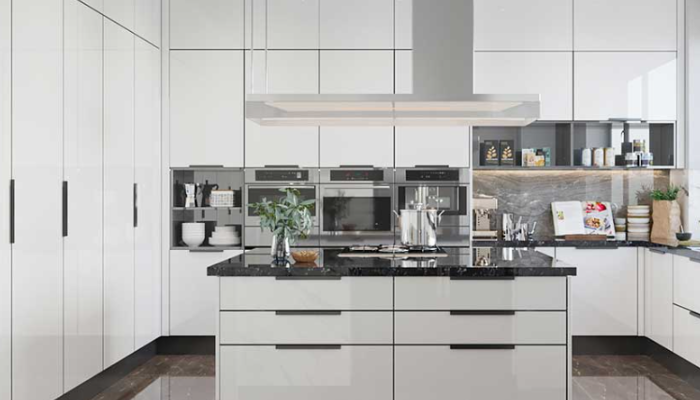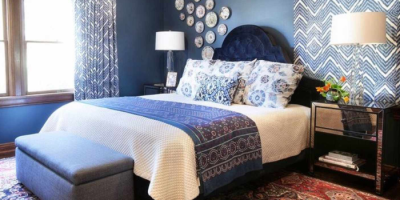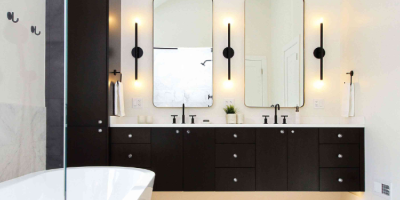A white kitchen is a timeless and classic design that has remained a popular choice for homeowners. With its clean and bright appearance, a white kitchen can make a space look bigger, brighter, and more inviting. But designing a white kitchen can be challenging because it requires careful attention to details such as materials, finishes, textures, and accessories. This article will discuss some essential tips and tricks for designing a white kitchen that looks stunning, functional, and easy to maintain.
Choose the right shade of white
The first step in designing a white kitchen is to choose the right shade of white. White is not a single color but a spectrum of shades that vary in tone, warmth, and brightness. Some shades of white have cool undertones, while others have warm undertones. Some are brighter, while others are more muted. When selecting a shade of white for your kitchen, consider the natural light, the surrounding colors, and the mood you want to create. A bright white kitchen can look crisp and modern, while a warmer white can feel cozy and inviting.
Use different textures and finishes
If you want to prevent a white kitchen from looking sterile or bland, it’s important to incorporate different textures and finishes. It can include using matte or glossy finishes on cabinets, mixing different countertop materials, and incorporating natural elements like wood, stone, or metal. Texture can add depth and dimension to a white kitchen and help create a focal point. For example, a textured backsplash or a stone countertop can add visual interest and contrast to white cabinets.
Consider the layout
The layout of a white kitchen can significantly impact its functionality and visual appeal. Consider the work triangle, which refers to the relationship between the stove, sink, and refrigerator. A well-designed work triangle can do cooking and cleaning more efficiently and create a better flow. Also, consider the placement of appliances, storage, and seating. A white kitchen can benefit from an open layout that allows natural light to flow freely and creates a sense of space.
Choose the right lighting
Lighting is critical in a white kitchen to enhance its brightness and create a warm and inviting atmosphere. Consider layering different types of lighting, including overhead, task, and ambient lighting. Pendant lights over an island can add a decorative touch and provide task lighting for cooking. Under-cabinet inserted lighting can create a warm and inviting glow and highlight the texture of the backsplash. Recessed lighting can provide ambient lighting and enhance the brightness of the space.
Incorporate pops of color
While modern white kitchen cabinets are timeless and sleek, incorporating pops of color can add interest and personality. Consider adding colorful accessories such as a rug, artwork, or decorative plates. You can also add color through plants, flowers, or fruit bowls. A bright accent wall can add a focal point and create a sense of depth.
Keep it clean and organized
A white kitchen requires regular cleaning and maintenance to keep it looking pristine. To make cleaning easier:
- Choose materials and finishes that are durable and easy to clean, such as quartz or granite countertops and ceramic tiles.
- Avoid using materials prone to stains or scratches, such as marble or wood.
- Keep the kitchen organized using storage solutions such as pull-out cabinets, built-in pantries, and drawer organizers.
- Choose the right hardware: Hardware can add a decorative touch to a white kitchen and enhance its overall aesthetic. When choosing hardware, consider the style and finish. Hardware can be a focal point or a subtle accent. Consider using matte black or brushed nickel hardware for a modern and sleek look. For a traditional look, consider using brass or bronze hardware. Also, consider the size and shape of the hardware and ensure that it’s comfortable to use.
- Consider the backsplash: The backsplash is an important white kitchen element that adds interest and texture. Consider using a backsplash material that contrasts with the cabinets, such as a subway, mosaic, or textured tile. A backsplash can also be an opportunity to incorporate color or pattern. For example, a patterned cement tile or a colorful glass tile can add a focal point and create a sense of depth.
Incorporate natural elements
Natural elements like wood, stone, or metal can add warmth and texture to a white kitchen. Consider using a wood cutting board, a wooden stool, or a wooden tray to add a natural element. A stone countertop or a stone backsplash can add texture and contrast. Metal accessories such as a stainless steel faucet or a copper pendant light can add a modern and industrial touch.
Add decorative touches
Decorative touches can add interest and personality to a white kitchen. Consider adding decorative plates, vases, or bowls to a shelf or a countertop. A statement piece, such as artwork or a large clock, can add a focal point and create a sense of depth. Adding decorative touches can also be an opportunity to incorporate color or pattern.
In conclusion, designing a white kitchen requires careful attention to details such as shade, texture, layout, lighting, color, hardware, backsplash, natural elements, and decorative touches. By incorporating the above elements, you can create a white kitchen that is timeless, functional, and inviting. A white kitchen can also be versatile and adaptable to different styles and trends, making it a worthwhile investment for any homeowner. With the right design, a white kitchen can be the heart of the home and a space where family and friends gather to cook, eat, and create memories. Read more!


















Comments